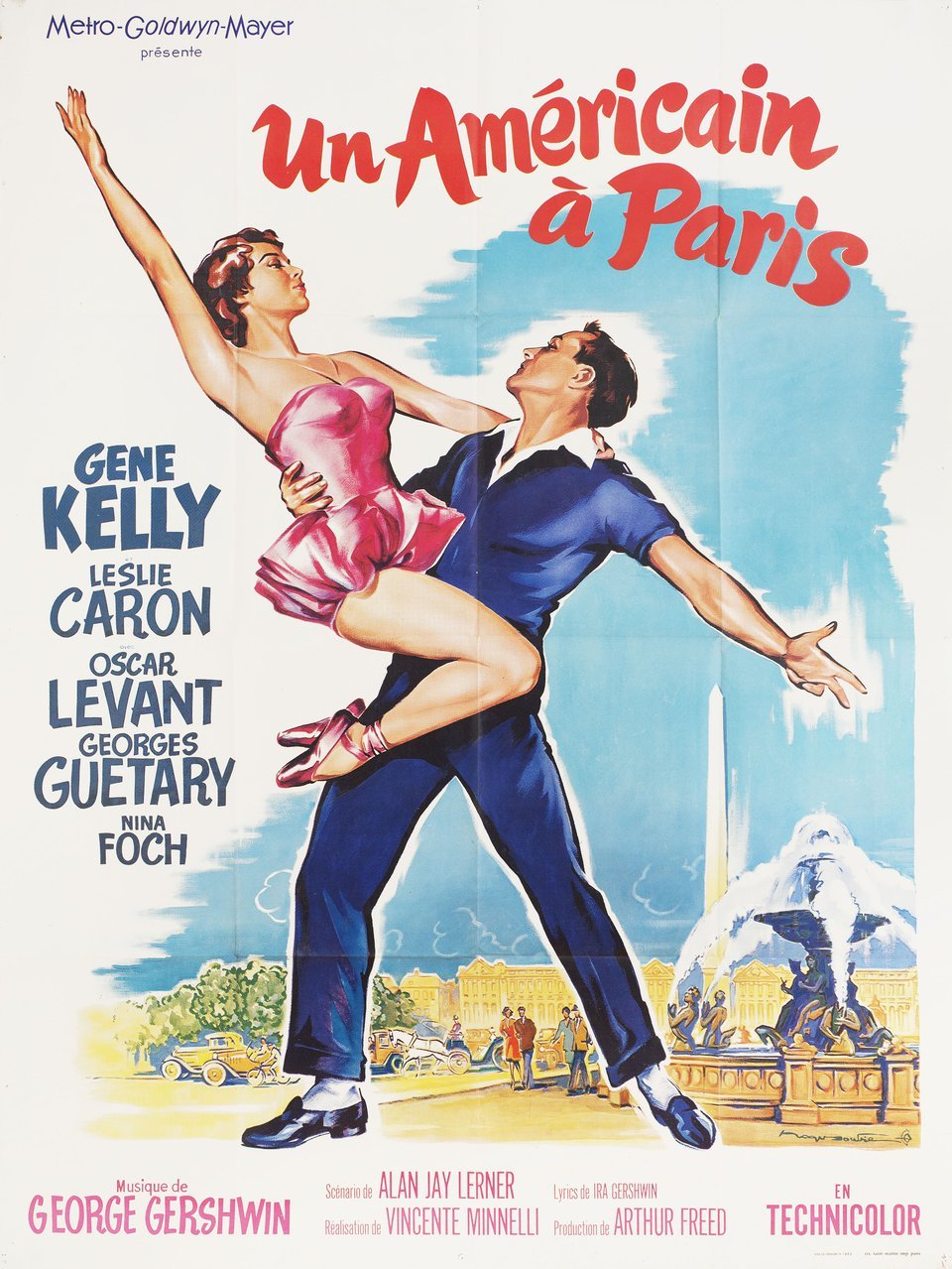Patrick McElroy on the joy & necessity of Vincente Minnelli's & Gene Kelly's AN AMERICAN IN PARIS
Oscar winning director William Friedkin once remarked that, “The MGM musical is the spine of the American film.” This quote might be a surprise at first, since these were films that were often regarded as light fluff, but Friedkin couldn’t be closer to the truth. These were films of master craftsmanship, and style, that never failed to charm audiences, or influence future filmmakers. Many point to Meet Me in St. Louis (1944) as the beginning of the era, and Gigi (1958) as the end point, but the beginning of the peak was right in the heart of these two films which was An American in Paris, which is celebrating its 70th anniversary this month.
The film was directed by one of the top directors of the studio, Vincente Minnelli, and starred one of the top stars Gene Kelly. The film takes place in post WWII Paris France, and focuses on Jerry (Kelly) an expatriate veteran who is trying to make it as a painter. When working on one of his paintings on the streets, it catches the attention of a lonely divorcee heiress Milo (Nina Foch) who wants to buy his works. She begins to take a romantic interest in him, but his attention is drawn towards an engaged young woman Lise (Leslie Caron).
The rest of the movie follows these characters along with his struggling pianist friend (Adam), as they all try to pursue their passions and loves in their adopted city. The plot of the film may not sound complex, but that’s the charm of it, it provides us with lovable characters, witty dialogue, and a sweet love story. But let’s get to the main attraction to the movie, which is the musical numbers.
The film consists entirely of songs by perhaps the greatest songwriting duo of the first half of the twentieth century, George and Ira Gershwin. Each one of their songs is presented with an energy and aliveness that’s more thrilling than most modern action sequences. In the post MTV culture that we have now everything is rapid fire editing, here its presented in fluid camera moves, and follows Fred Astaire’s rule of capturing a dancer from head to toe. Minnelli was influenced by the master of camera movement Max Ophuls, and in this film, there are some wonderful camera flourishes.
There’s a wonderful sequence where the character of Lisel is being described, and with each different description she’s shown in a grand camera move. What Minnelli does in his musical’s is he shows in wide shot, the faces of his extras as they look in joy at the main characters performing their numbers. In the S’Wonderful number, you see expressions of amusement as they watch Kelly, and Georges Guetary perform, this was something that wasn’t shown in the films of Stanley Donen, or George Sidney.
After seeing Michael Powell and Emeric Pressburger’s masterpiece The Red Shoes, Kelly took inspiration to do a dream ballet as the climax of the film, like what Powell and Pressburger did in the middle of their film. The executives had serious doubts over it, but the results were so grand, and it was met with such popularity, that it then became a staple for future musicals of the studio to also attempt them.
When looking at the MGM musicals now, you feel the same sense of joy that they brought to audiences then, maybe Hollywood should take note of them, and bring back the sense of charm that brought them popularity in the beginning.
Patrick McElroy is a movie writer and movie lover based in Los Angeles. Check out his other writing at: https://www.facebook.com/patrick.mcelroy.3726 or his IG: @mcelroy.patrick


